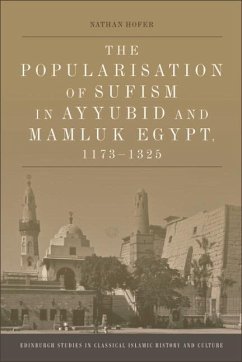A social, political and religious history of Sufism in Medieval Egypt
After the fall of the Fatimid Empire in 1171 and the emergence of a new Sunni polity under the Ayyubids, Sufism came to extraordinary prominence in Egypt. The state founded and funded hospices to attract foreign Sufis to Egypt; local charismatic Sufi masters appeared throughout Upper and Lower Egypt; organised Sufi brotherhoods emerged in the urban centres of Cairo and Alexandria; and even Jews took up the doctrines and practices of the Sufis. By the middle of the Mamluk period in the 14th century, Sufism had become massively popular. How and why did this popularisation happen? This book is the first to address this issue directly, surveying the social formation and histories of several different Sufi collectivities from this period. Arguing that the popularisation of Sufism during this time was the direct result of deliberate and variegated Sufi programs of outreach, strategies of legitimation and performances of authority across Egypt, these programs, strategies and performances are situated within the social and political contexts of the institutionalisation of Sufism, audience participation, and Ayyubid and Mamluk state policies.
Key Features
- Offers a wide-ranging description of the variegated social landscape of Sufism in Ayyubid and early Mamluk Egypt
- Presents a new theoretical model to describe the institutionalisation and popularisation of Sufism
- Case studies of three different groups of Sufis in medieval Egypt track this institutionalisation and popularisation
- A heuristic framework connects Sufism to larger social and political trends in medieval Egypt
Dieser Download kann aus rechtlichen Gründen nur mit Rechnungsadresse in A, B, BG, CY, CZ, D, DK, EW, E, FIN, F, GR, HR, H, IRL, I, LT, L, LR, M, NL, PL, P, R, S, SLO, SK ausgeliefert werden.









